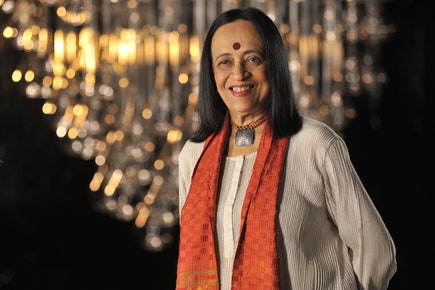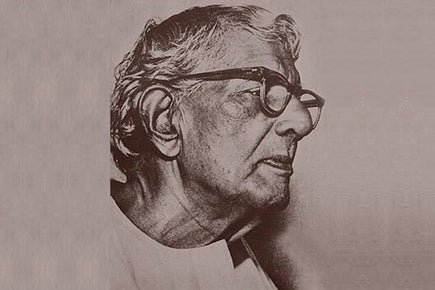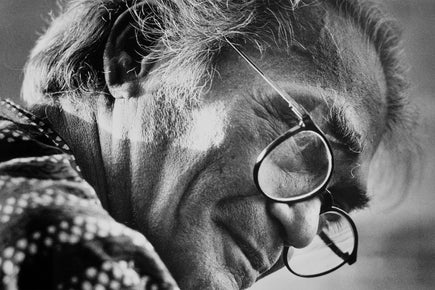Bhil Art - How A Tribe Uses Dots To Make Their Story Come Alive
It is often said that to know the art form of a particular place, is to know the place itself. If that is true, then to look at Bhil Art, is to enter the house of the artists themselves; to experience firsthand, this intimate art form from Central India.
The Bhils are the second largest tribal community in India, residing in Madhya Pradesh, Gujarat, Maharashtra and Rajasthan. Some Bhils trace their ancestry to Eklavya, the archer from Mahabharata, while some scholars even believe that Valmiki, who authored Ramayana, was a Bhil.

Traditionally, the art of the Bhil folk would adorn the clay walls of their village homes. Beautiful images would be painted with neem sticks and other twigs, and natural dyes would be used. Turmeric, flour, vegetables, leaves and oil were used to derive brilliant colours to make fascinating frescoes on floors and walls, in a language created by the Bhils, to convey their experiences.
 (A Bhil artist stands against an entire wall painted with Bhil motifs; Image Source - bhilart.com)
(A Bhil artist stands against an entire wall painted with Bhil motifs; Image Source - bhilart.com)
Of Dots and Colours
One look at a Bhil painting, and you’ll immediately begin to recognize it anywhere you see the art form. Bhil paintings usually consist of large, un-lifelike shapes of everyday characters filled in with earthy, yet bright colours, and then covered with an overlay of uniform dots in several patterns and colours that stand out strikingly against the background.
The dots on a Bhil painting are not random. They are patterns that could be made to represent anything that the artists wish to, from ancestors to deities. Because these patterns are solely in the hands of the artists who create them, the work of every Bhil artist is unique, and the dot patterns can be counted as the artist’s signature style.
 (Bhil painting by renowned Bhil artist Ladoo Bai)
(Bhil painting by renowned Bhil artist Ladoo Bai)
An Honest Depiction of Real Life
Bhil Art is instinctive and primordial, born out of an ancient connection with nature. The Bhils are largely an agricultural community whose lives are centered around the land they work with. What makes the art extra special, is that it has travelled down generations, with most artists learning it from their mothers.
Bhil art is also often ritualistic. Every painting is a story of the land told through the depictions of people, the animals, the insects, the deities, the festivals. Even the Sun and Moon are frequent characters in the stories. Legends and lore are told through Bhil paintings. Births and deaths are recorded. Religious occasions remembered. These paintings are even offered as gifts to gods and goddesses at the time of festivals.
 (Bhil painting by renowned Bhil artist Ladoo Bai)
(Bhil painting by renowned Bhil artist Ladoo Bai)
Today, we’re getting to see much more of Bhil art in the mainstream. Clay has been replaced by canvas, natural dyes with acrylic paints. The artists who would earlier paint on walls and floors of their village homes, are now recognized over the country and even internationally, their works sold for hundreds of dollars. But there’s something about this form of art that is so rooted, that a change in medium or even recognition, does not rid it of the honesty of its depictions.
 (Bhil painting be Dubu Bariya)
(Bhil painting be Dubu Bariya)
Recognition and Change
One can find authentic Bhil art adorning the walls of the anthropology museum, Museum of Man, in Bhopal, Madhya Pradesh. This is the work of Bhuri Bai of Jher, one of the most well known Bhil artists of our time. Other contemporary Bhil artists to note are Ladoo Bai, Sher Singh, whose work is characterized by his distinctive colour palette of red, green and black, Ram Singh and Dubu Bariya.
 (Bhuri Bai of Jher)
(Bhuri Bai of Jher)
In recent times, Bhil artists have started including modern elements into their cast of characters. Buses and other transport are frequent themes. This is a perfect example of the truthfulness of the art form, that records life as it is, as it progresses. It is this honest simplicity that makes Bhil art so striking. There is something almost sacred in the dots that fill up the less than perfect shapes, telling us a story about life as it happens.
In the words of Bhil artist Sher Singh himself, “Everything in our lives revolve around art”. And if we are to judge by the Bhil art we see, we couldn’t agree more - it is indeed a colourful world the Bhils live in.
























































































